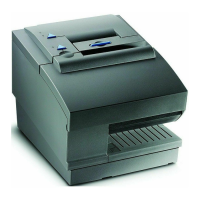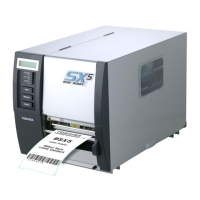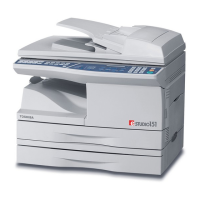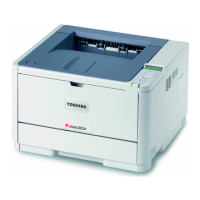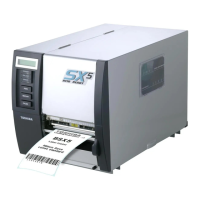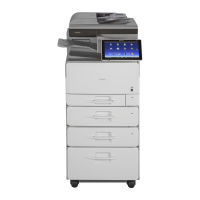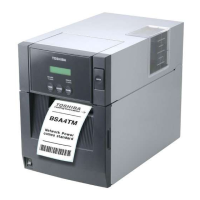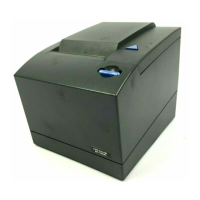
Do you have a question about the Toshiba SureMark 4610 1NR and is the answer not in the manual?
| Print Method | Direct Thermal |
|---|---|
| Print Speed | 300 mm/sec |
| Print Resolution | 203 dpi |
| Paper Width | 80 mm |
| Dimensions | 145 mm x 195 mm x 143 mm |
| Weight | 1.6 kg |
| Power Supply | 24V DC |
| Printer Type | Receipt printer |
| Resolution | 203 dpi |
| Interface | USB |
Identifies the intended users for this hardware guide.
Provides website links and steps to access additional Toshiba publications.
Lists other publications providing further details about the SureMark 4610 Models 1NR printer.
Defines the meaning of Notes, Important, Attention, and CAUTION notices used in the guide.
Lists the key features and technical specifications of the SureMark 4610 Model 1NR printer.
Details requirements for Ethernet and WiFi adapters, including firmware and manufacturing date.
Lists supported operating systems and drivers for the SureMark 4610 printer.
Explains the function of the printer's buttons, LEDs, and other indicators.
Describes the physical location of the power button on the SureMark 4610 Model 1NR printer.
Provides instructions on what information to have ready when calling for warranty or service assistance.
Illustrates and lists the physical dimensions of the SureMark 4610 Model 1NR printer.
Specifies the acceptable temperature and humidity ranges for shipping, storage, and operation.
Advises reading safety information before starting the installation process.
Explains integrated vs. distributed configurations for printer setup.
Lists the items typically included in a SureMark 4610 printer order.
Details the procedure for installing various interface cards (RS-232, RS-485, USB, Ethernet, WiFi).
Provides instructions on how to route cash drawer and RS-485 cables through the back cable slot.
Explains the role of fillers in positioning the printer within a system and refers to system unit documentation.
Guides users through the steps for wall or 45-degree mounting of the printer unit.
Provides guidance for setting up the 4610 WiFi Interface Adapter, including firmware prerequisites.
Instructions for printing a test/status receipt containing essential setup information.
Details how to connect a computer to the printer's Access Point for WiFi setup using a web browser.
Explains how to access and log into the printer's web-based interface for WiFi setup and management.
Describes selecting a network and entering required information to configure the WiFi client.
Details how to set IP parameters via Quick Setup or the Wireless Network Interface Configuration page.
Instructions for changing default web interface and access point passwords for network security.
Explains how to log into the printer's web interface to configure network settings and management.
Instructions for setting printer IP parameters via the Network menu, typically using DHCP.
Instructions for changing the printer's web interface password via the Admin Access menu.
Information on responsible replenishment of consumables, specifically paper rolls.
Step-by-step guide on how to correctly load and replace the paper roll in the printer.
Specifies the requirements for thermal paper to ensure print quality and printer longevity.
Guidance on cleaning the printer's exterior cover using mild soap and water.
Instructions for cleaning the thermal printhead to maintain print quality, using isopropyl alcohol.
Explains how to evaluate printer usage and performance by printing usage statistics.
States the product's intended use and limitations regarding public telecommunication networks.
Advises on using designated monitor cables and interference suppression devices.
Details FCC compliance for Class A digital devices, including interference correction measures.
Specifies compliance with FCC RF exposure requirements, including minimum separation distance.
States compliance with Canadian ICES-003 and RSS247 standards for Class A digital apparatus.
Covers Industry Canada compliance, including radiation exposure limits and operational conditions.
Confirms conformity with EU directives for electromagnetic compatibility, including CISPR 32/EN 55032 limits.
Details Germany's compliance with EU directives for electromagnetic compatibility and Class A equipment.
Warns about potential radio interference in domestic environments for Class A products.
Warns about potential radio interference in domestic environments for Class A products.
Addresses radio interference for Class A products in residential areas in Russia.
Specifies precautions for power cords supplied with the product for Japanese markets.
Confirms compliance with Japanese guidelines for power line harmonics.
States compliance with Japan's Voluntary Control Council for Interference (VCCI) Class A standard.
Confirms compliance with JEITA Harmonics Guidelines for products exceeding 20 A.
Identifies the equipment as business-use (Type A) and for non-home areas.
Warns users in Taiwan about potential radio frequency interference in domestic environments.
Provides contact details for Toshiba Global Commerce Solutions in Taiwan.
Mandates the use and non-removal of cable ferrites for suppressing radiated EMI emissions.
Details ESD precautions and procedures to prevent damage to sensitive electronic components.
Instructs on responsible recycling and disposal of the unit according to local regulations.
Provides critical safety warnings regarding lithium batteries, including explosion risks.
Information on recycling or disposing of various battery types and resources for battery recycling.
Advises on special handling requirements for perchlorate material in California.
Informs about mercury content in fluorescent lamps of LCDs and proper disposal.
Provides links to state resources for recycling electronic devices in Connecticut and Oregon.
